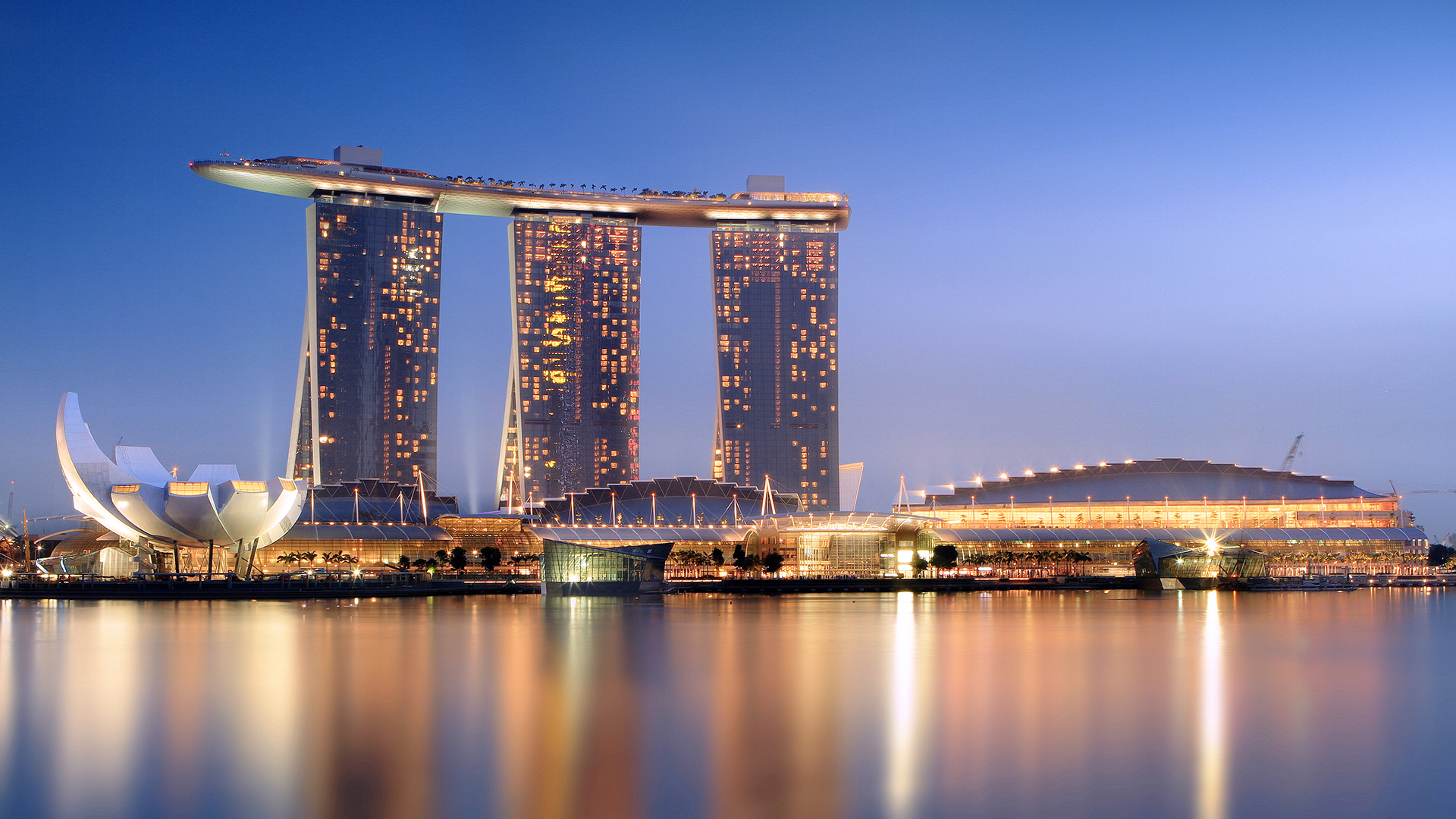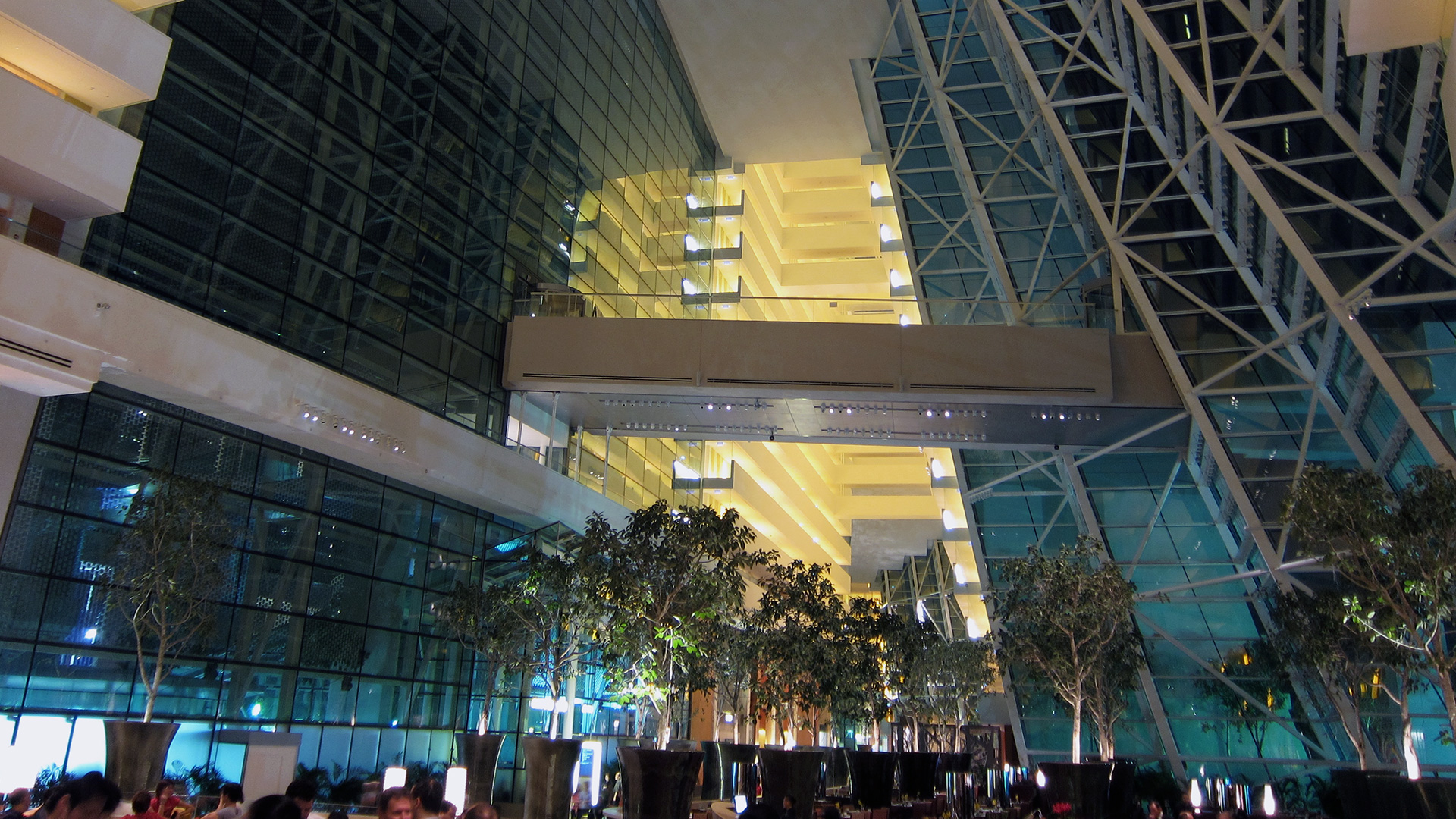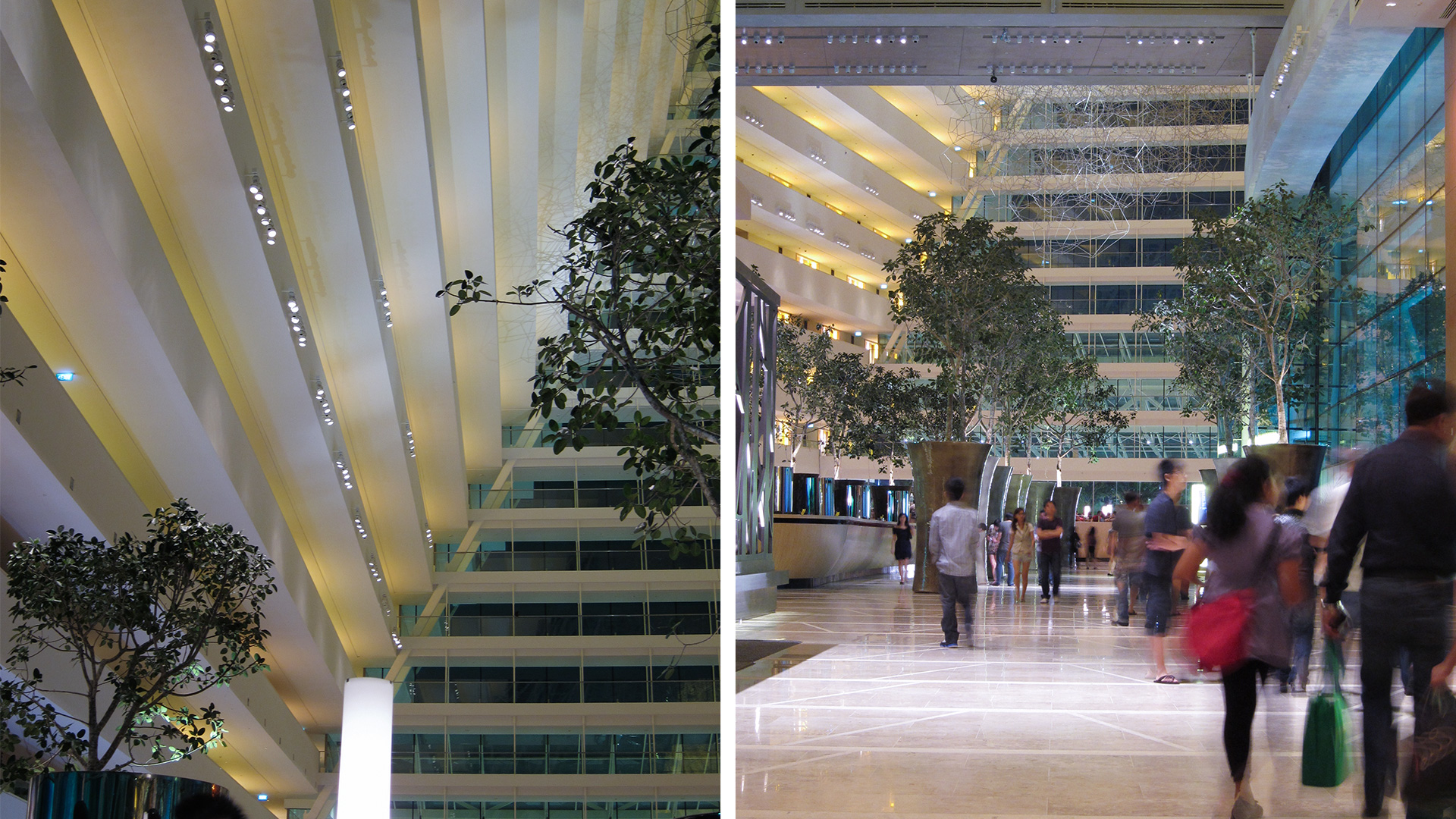


Situated in the heart of Singapore’s central business district, the magnificent Marina Bay Sands integrated resort is billed as the world’s most expensive standalone casino property, valued at over US $5 billion. Featuring a 2,560-room hotel, expansive convention-exhibition center, luxury shopping mall, museum, two theaters and several restaurants, the landmark property represents a one-stop destination for entertainment, business, and leisure in Asia.
Designed by internationally-renowned architect Moshe Safdie for the Las Vegas Sands Corporation, the resort’s distinctive appearance is said to be inspired by a deck of cards and represents a gateway to Singapore, providing a dynamic setting for a vibrant public life. The hotel is divided between three sloping towers and is crowned by the famous Sands SkyPark – a 340m long platform that connects the towers at the 57th floor – which offers spectacular 360-degree views of the Singapore skyline.
Inside the hotel, the towers are linked by an equally-impressive atrium running the length of the hotel complex. At 30 stories high, it is one of the largest in the world. The cavernous space is an engineering marvel and offers a respite from the hectic life outside. However, lighting such a space posed quite a problem for lighting consultants, Project Lighting Design (PLD), a Singapore-based practice headed by acclaimed designer, Stephen Gough.
The irregular shape created by the sloping towers of the hotel meant there was no ceiling to mount traditional lighting sources such as downlights, pendants, or chandeliers; a new solution would have to be found. Having worked previously with RCL on the Dubai Mall (the world’s largest shopping center), PLD was aware of their ability to work on large and unusual jobs, supplying custom lighting equipment. The designers felt that RCL’s remote controlled spotlights would be ideally suited to the task.
To overcome the mounting issues faced, bespoke “light bars” that could accommodate several remote controlled spotlights and the DMX equipment to control them were designed and manufactured by RCL. The bars – which were produced in 1.25m and 2.50m variations – were supported from below using three specially-designed brackets. The brackets provided a safe fixing for the light bars and also provided power and the DMX connections needed for the fittings to operate. The bars were distributed throughout the atrium, attached to the structures such as the parapet wall of the guest corridors.
Special consideration was also paid to maintenance of the equipment. Due to the height and positioning of the light bars attached to the parapet walls, a custom service trolley was provided which allowed maintenance staff to retrieve the bars safely, if needed.
In addition to its unusual shape, the atrium also featured extensive floor-to-ceiling windows, which flooded much of the space with natural light during the day. To complement this, a variety of lamp types were used throughout the structure. DR8s fitted with cooler CDM-T lamps and glare-reducing custom snoots were specified at various points within the atrium for use in the daytime.
The DR8s were supplied with different color-tuned light sources as day turned to night. Over the course of the evening, the luminaires would then slowly dim down to offer a warm glowing atmosphere that is welcoming and flatters skin tones. Luminaires with cooler sources would switch back on after midnight to provide appropriate lighting for the cleaning staff. The transition in color temperature throughout the day was of particular importance to the developers who enlisted the help of Feng Shui consultants to advise on the design of the resort.
At lower levels in the hotel’s atrium, DR7s were installed to offer lighting above the check-in desks. The low profile design of the DR7 offered the required flexibility without detracting from the overall design of the space. The DR7s were fitted with QR111 lamps plus honeycomb louvers to reduce glare.
A critical aspect of setting up the lights was to provide uniform illumination throughout the installation. The internal dimming system within the halogen spotlights offered the lighting designers the control required to create the desired effect. Furthermore, because the fixtures could be controlled remotely, the designers were able to accurately focus the lights from floor level without the need for mechanical lifts. In total, 366 luminaires were installed across the project, connected to twenty DMX “universes”. All of the lights were then combined in a single system using Helvar 920 Routers.
Project Name: Marina Bay Sands
Location: Singapore
Lighting Designer: Project Lighting Design
Industry: Hospitality
Share